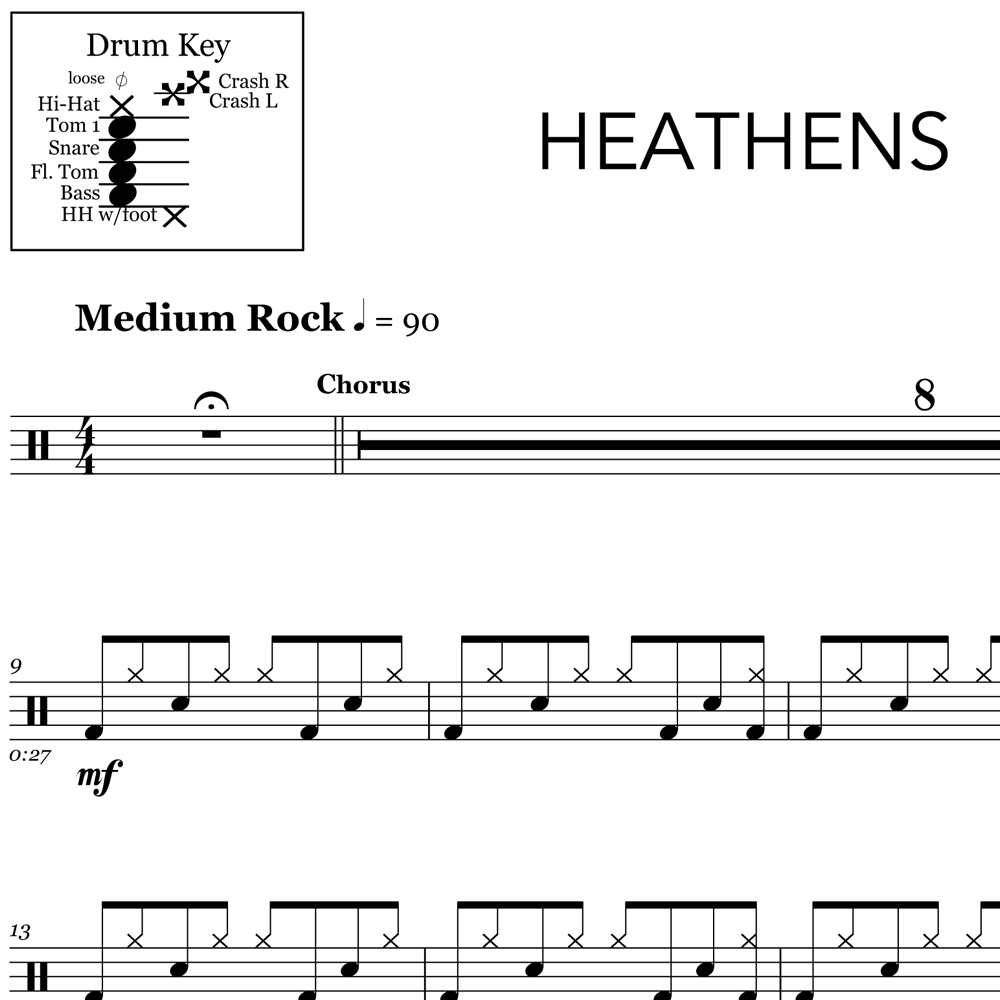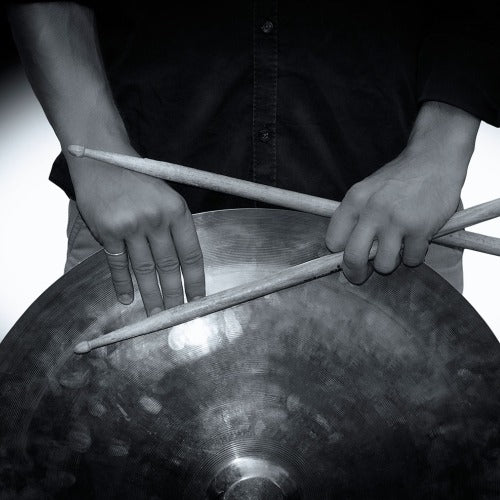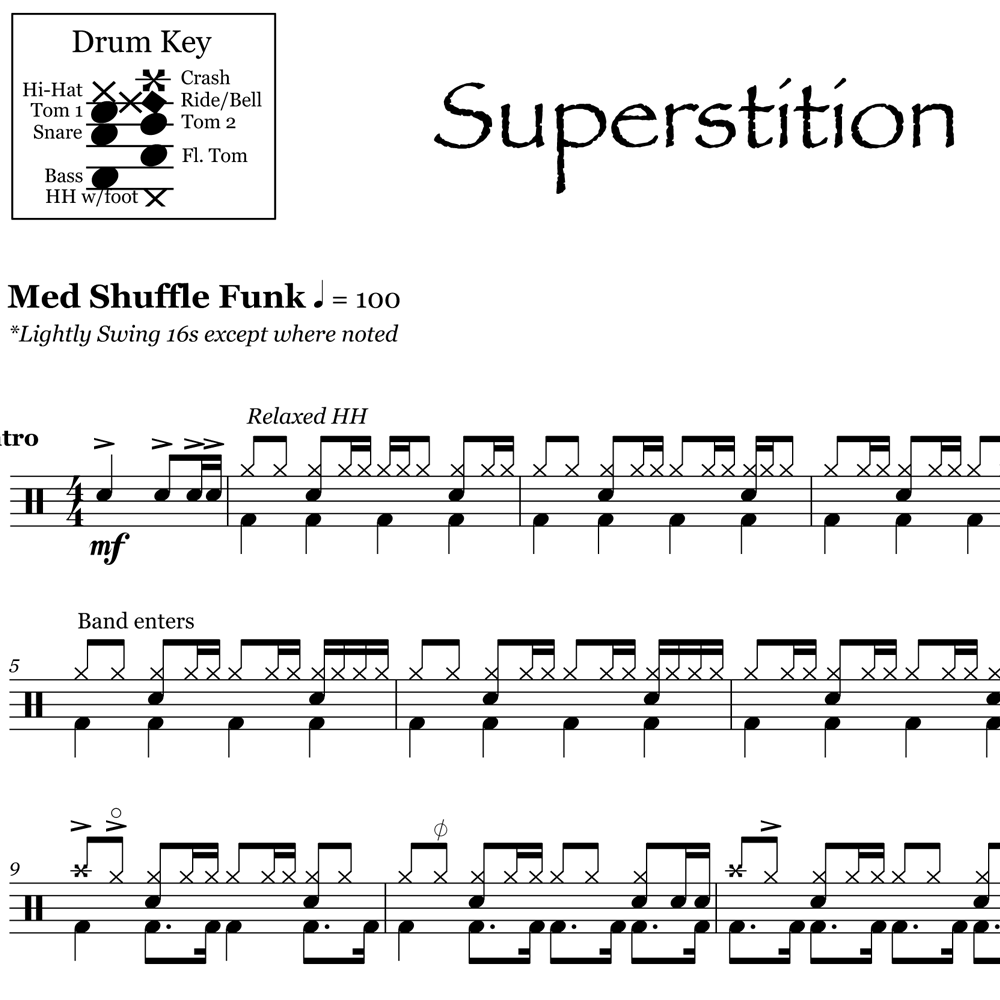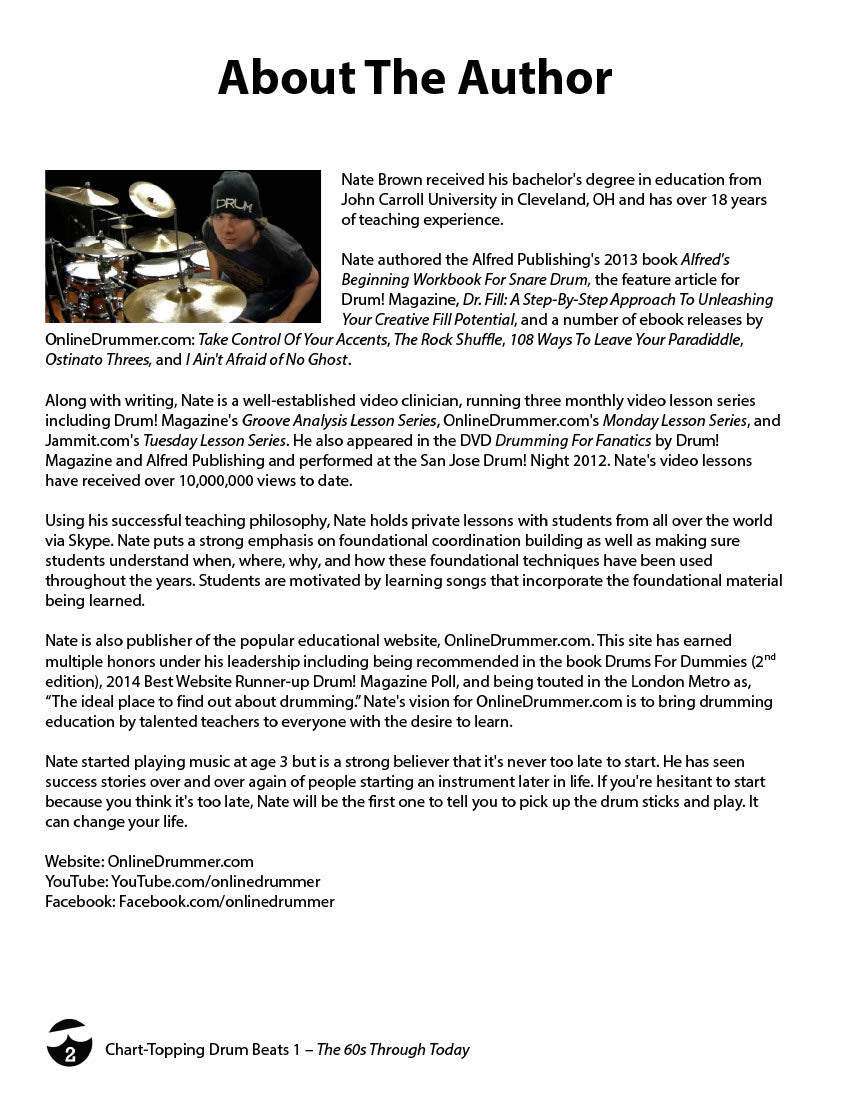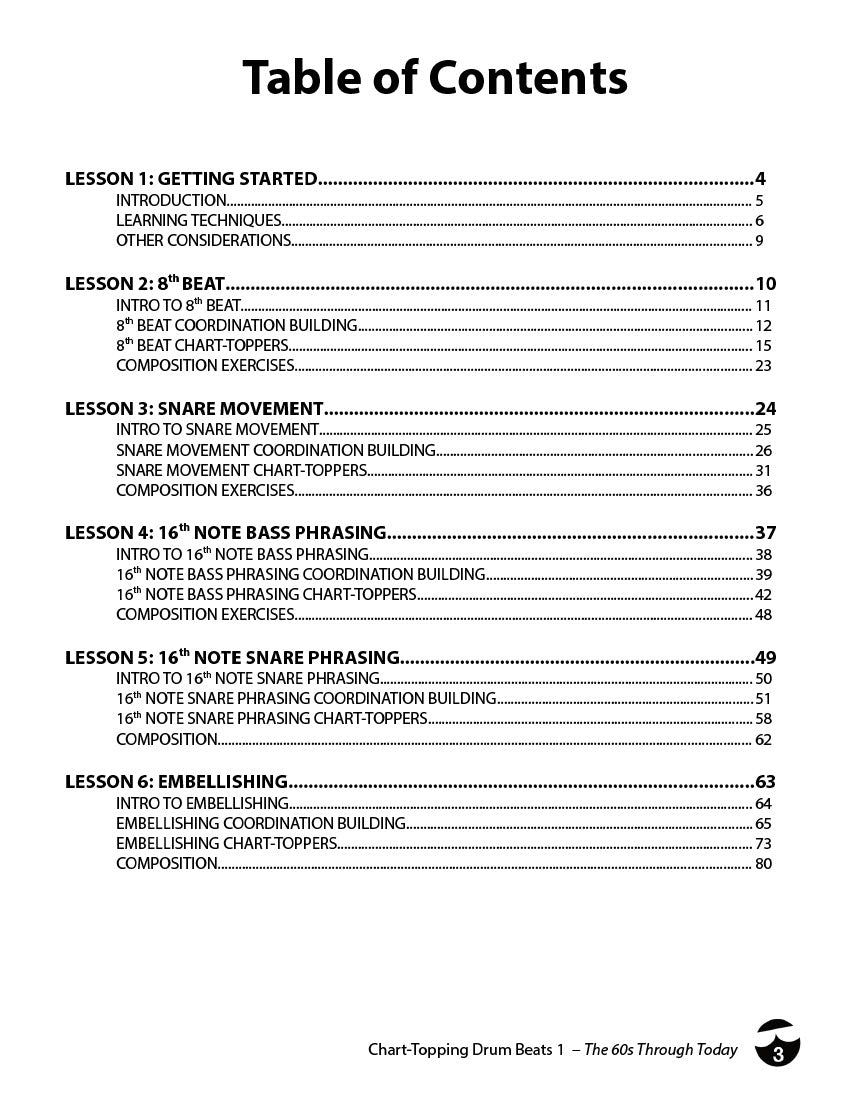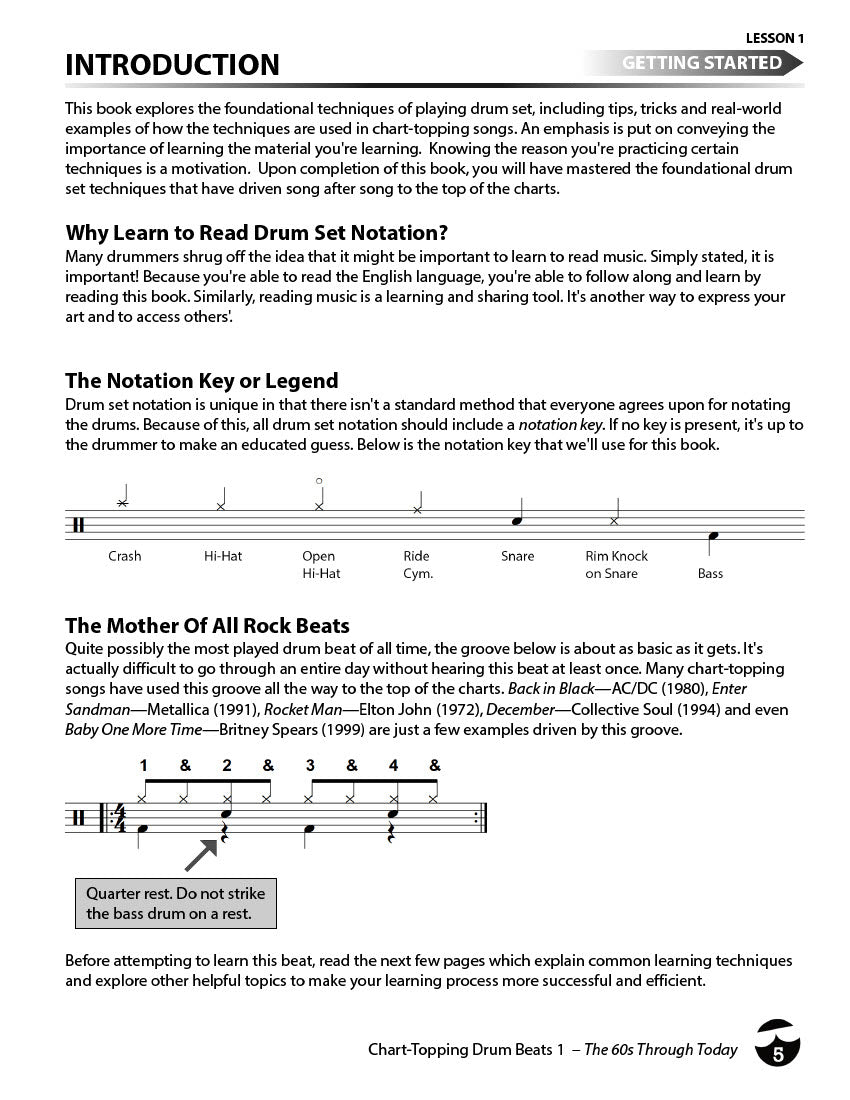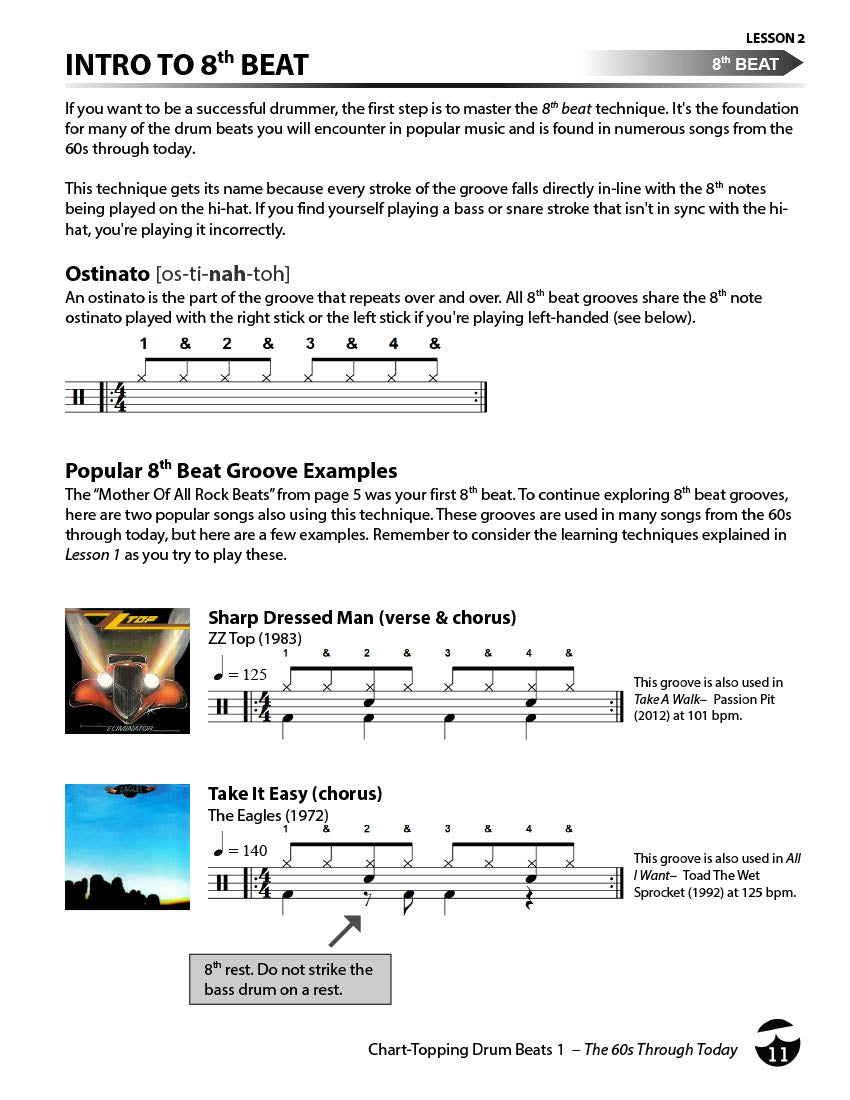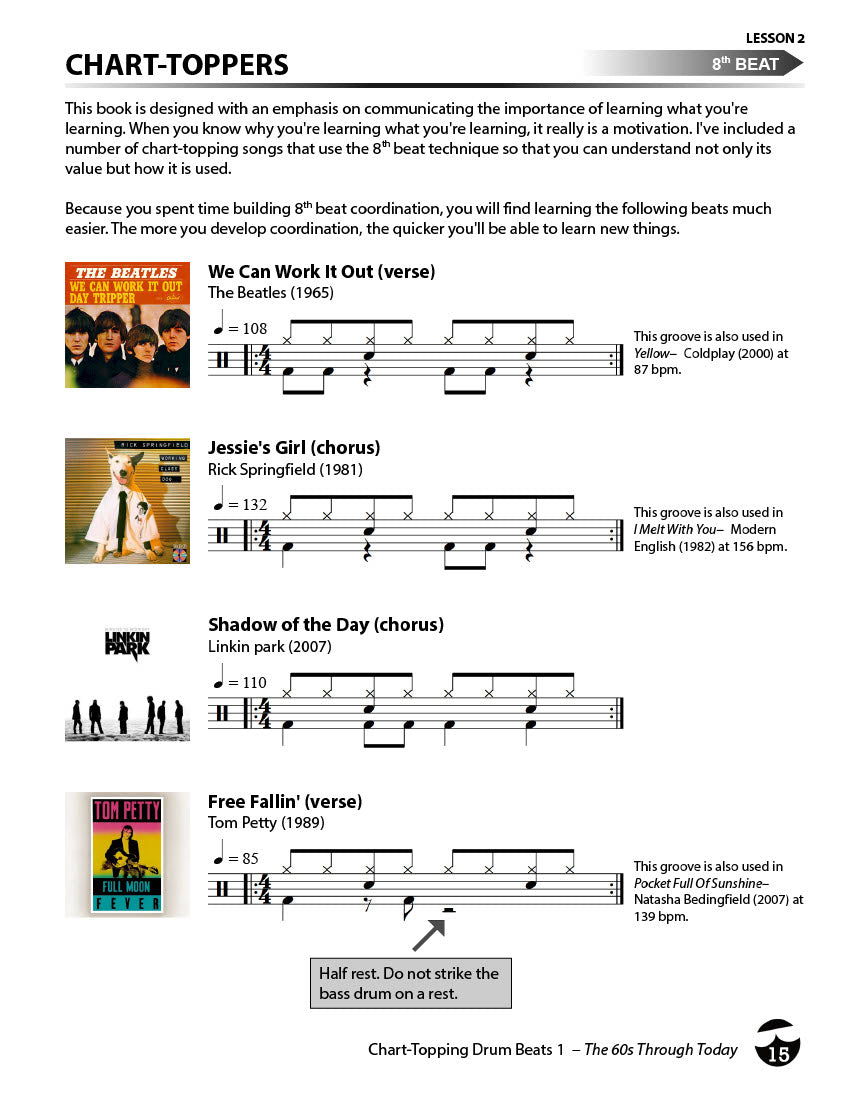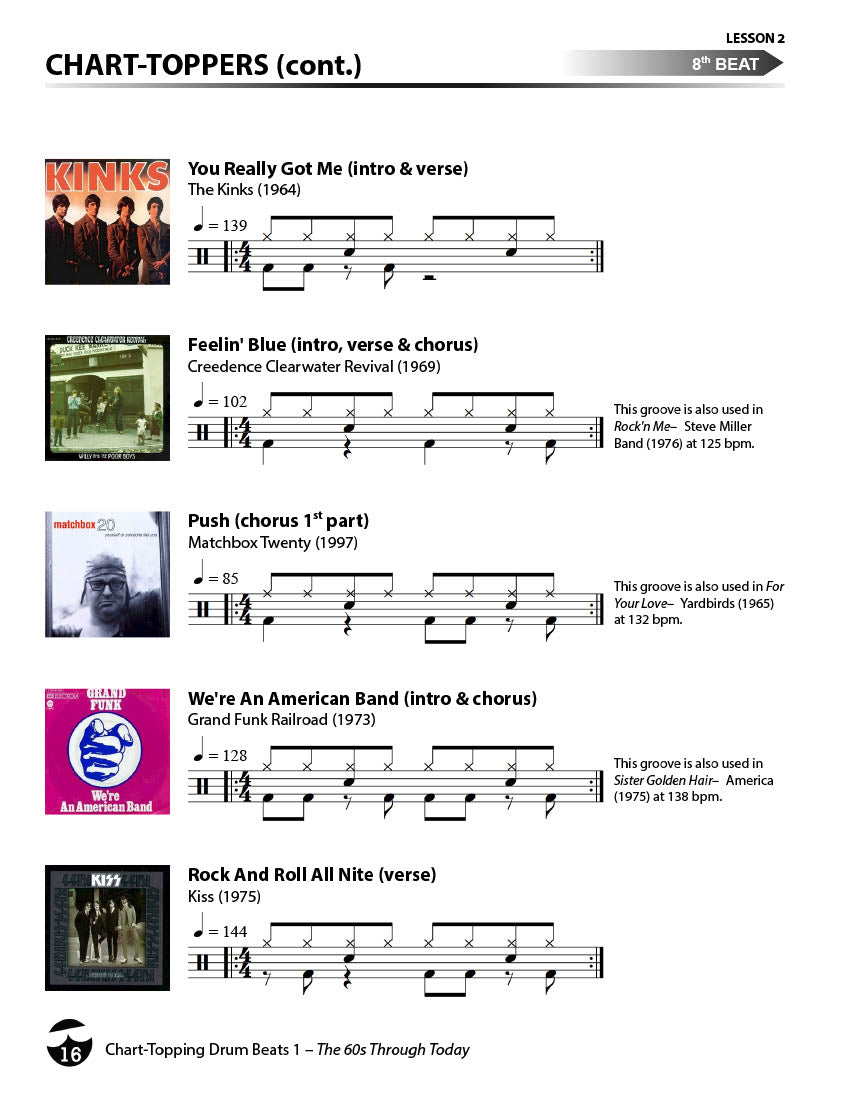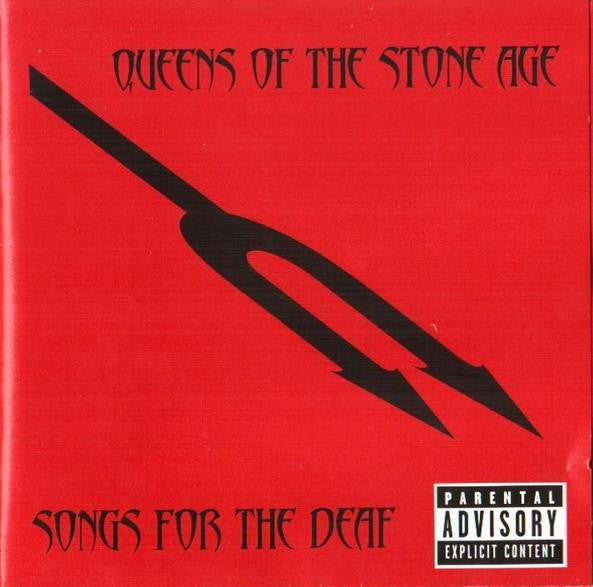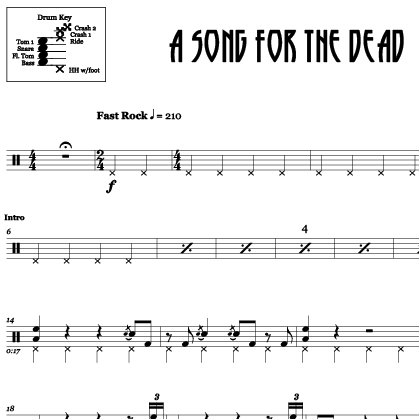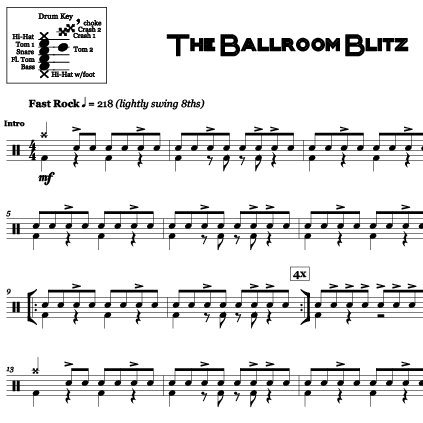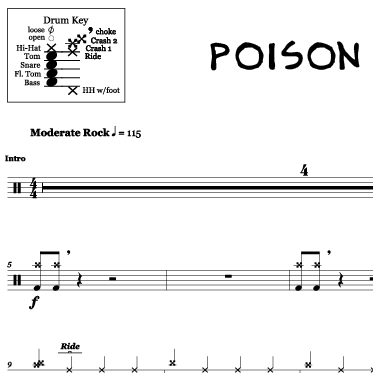How To Tune Drums
Tune Like The Pros
By far, the best tuning instructions I've found are Bob Gatzen's tuning lessons. I will share these below, but be sure to reach out to Bob with a thanks for the great instruction.
You will find many other tuning tips by Bob Gatzen here: https://www.youtube.com/results?search_query=bob+gatzen+tuning
The Art of Experimentation
Finding your drum's "sweet spot" or tuning range is a matter of experimentation. It's also very subjective. As a drummer, you'll know the sweet spot when you hear it, and that's great. Someone else might prefer a different sound, but it's your drum set.
Experiment to find the tune that defines your sound.
Realistic Expectations
Are you getting the best sound out of your drum kit? You won't know the answer to that question until you figure out your kit's potential. Your drums have a tuning range. Trying to tweak them until they sound like the drums from your favorite album will probably drive you nuts.
If you're trying to get a high-pitch, resonant, lively crack out of your snare drum when you're playing a 15 inch, deep-shelled, wooden snare drum, it's not going to work.
Every drum has its "sweet spot," which is determined by the depth, diameter, the material it's made of, and the head you put on it. Figuring out your kit's potential will save you a lot of headaches and frustration.
Knowing Your Shells
The material your drum shells are made of has a significant impact on the sound of your drums. Evans Drum Heads has done extensive research on the "sweet range" of your drum kit based on the type of wood it's made of. They've generously created the following charts.






Maple and birch are the most common wood-types found in professional-level kits. In the charts above, you can see that maple shells produce a lot of low-end, chest thumping bass. Birch wood doesn't present as much low-end, but the high-end (i.e. treble) is respectfully higher.
Many rock drummers prefer the powerful bass of maple wood for playing live shows, while the extra clarity of birch is preferred for the recording studio -- or other situations where quieter playing is needed.
In general, maple is a louder wood than birch, although shell thickness will have an impact on volume.
An often-made mistake is to measure a drum's thickness by the number of plies it's made of. You can't measure the thickness by plies alone. One company may use one sized ply while another uses a thicker ply. It's possible that a 9-ply shell is thinner than another company's 7-ply shell.
Other Popular Materials
A further breakdown of other popular drum materials is given by ladrummerie.com. Here is a breakdown of their findings:






POPLAR:
Poplar is a fast growing wood and offers medium strength for drum shells. This softer wood has been used in drum construction for decades and is often chosen as a filler wood between inner and outer plies of more expensive or aesthetically appealing woods. It has a sound similar to more expensive woods such as birch or mahogany.
BASSWOOD:
Basswood is another soft, fast growing wood. Many drummers think it has a sound similar to other more expensive woods such as maple or mahogany. It is often chosen for the inner and core plies of drum shells since it is inexpensive, yet still sounds good.
OAK:
Oak is a very strong wood and offers incredible durability and projection. It makes for a good alternative for more common shell materials offering a very present sound that has enough low-end to keep the tone round.
STEEL:
The most notable sound characteristic of drum shells made from steel is their bright tone, long sustain and penetrating rim shot sound. If you play a lot of rim shots or need your snare to cut through loud music you owe it to yourself to audition a steel-shelled snare drum. For this reason, Reggae drummers often prefer steel snare because they have such a cutting and bright tone. Many entry-level drum kits feature steel snare drums because they can be inexpensive to produce.
BRASS:
Brass shells offer the crispness generally associated with metal snare drums but also a warm tone, with clear and defined rim shots that are capable cutting through louder music.
COPPER:
Copper snare drums are often chosen for orchestral use because they have a slightly darker and warmer tone with more low end than brass or steel snares.
BRONZE:
Though often used for making cymbals, bronze is becoming a more popular material for high-end snare drums. The tone tends to be dark and warm and more subdued than brass or steel.
ALUMINUM:
Aluminum offers a penetrating sound that’s crisp, yet a bit drier with less sustain than steel or brass snares negating the need for any damping.
Are Your Shells Warped or Damaged?
I recall one frustrating evening when I was trying to tune a bass drum for a student. No matter what I did, the bass drum sounded terrible. It turns out that the bass drum was warped, meaning it wasn't completely round. Because of this, the drum head couldn't seat properly around the shell.
You'd think it would be easy to spot, but in this case it didn't stand out at first glance (or second or third). If you're not getting a good sound out of the drum, check to make sure they are round.
Damage to the bearing edges can also make tuning difficult (or impossible). The bearing edge is the part of the shell that comes into contact with the drum head. In a literal sense, it bears the drum head.
Run your fingers along the bearing edges to make sure they are smooth and consistent. If there are bumps, chips or other deformities, this will have an impact on the tune-ability of the drum.
Knowing Your Drum Heads
Selecting a drum head is an important decision. A head can change the attack, resonance and even the overall tone of the drum. The effects of drum head choice has been extensively studied by Evans Drum Heads. They've kindly made the results of their research available to the public. You can find extensive explanations here:
https://www.daddario.com/products/percussion/evans-drumheads/drum-set/drumset-snare-batter/




